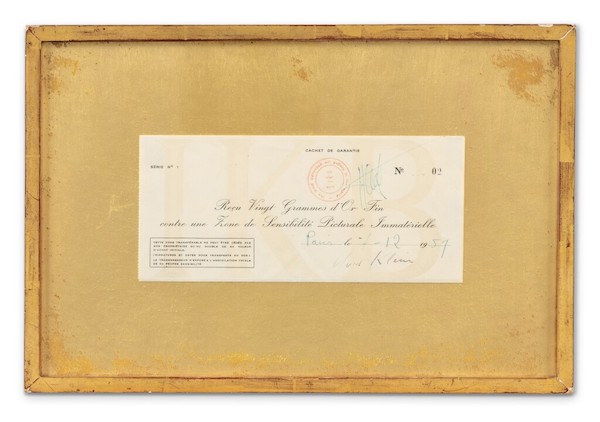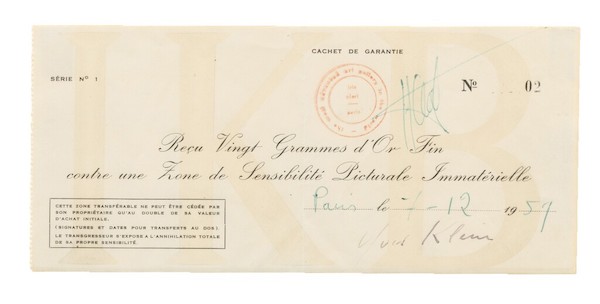A Receipt Is Being Auctioned Off For An Estimated Half A Million Dollars
By Mikelle Leow, 24 Mar 2022

Image via Sotheby’s
You might have gawked at the concept of non-fungible tokens or this outrageous invisible sculpture that sold for US$18,000, but these had already been done as far back as in the late 1950s.
French post-war artist Yves Klein’s taste for art is novel even by today’s standards. In 1958, he launched a showcase at the Iris Clert Gallery in Paris, entitled The Void, where he left a cabinet in an empty room. This display of thin air attracted thousands of visitors, according to Sotheby’s.
Later, Klein would expand on this concept by selling off invisible artworks under a project called Zones of Immaterial Pictorial Sensibility, pricing them at a weight of pure gold. As proof of purchase, the artist would issue buyers receipts resembling bankers’ checks.

Image via Sotheby’s
Come April 6, the auction house will sell off one of the last remaining receipts for an estimated €500,000 (US$549,000). This particular document is dated Dec 7, 1959, and was handed out to an antique dealer named Jacques Kugel.
The paperwork is so rare because Klein gave buyers two choices at the point of sale: They could either keep the receipt or have it burnt—a ritual accompanied by the dumping of half the gold payment into the Seine River.
Burning the paper, which measured no more than eight inches in width, would render the collector the “definitive owner” of the imaginary artwork. Evidently, this buyer chose to hold on to the invoice.
In a contemporary yet apt update to the experimental work, Sotheby’s says it will take in cryptocurrency offers for the receipt, likening its workings to those of the modern-day NFT.





